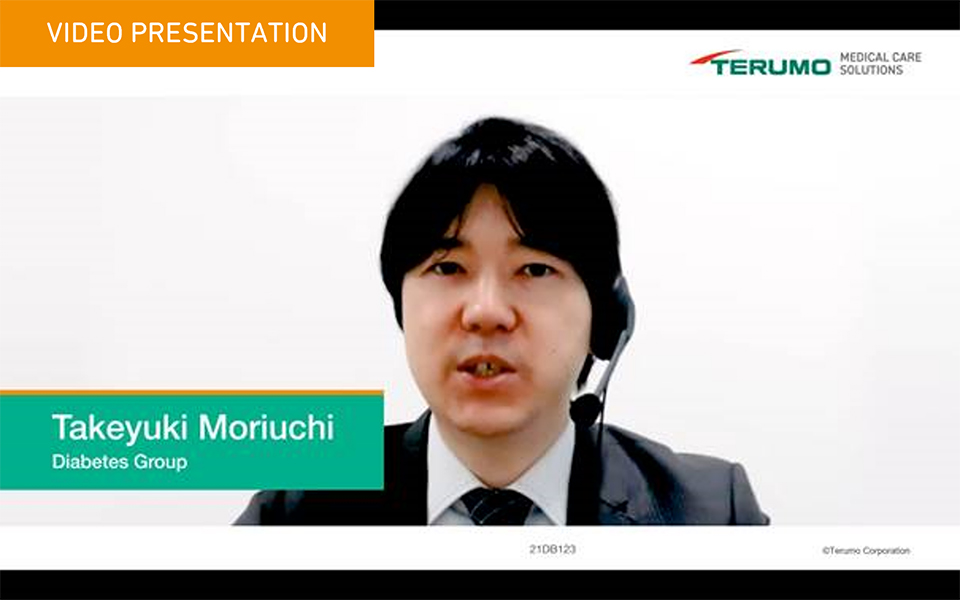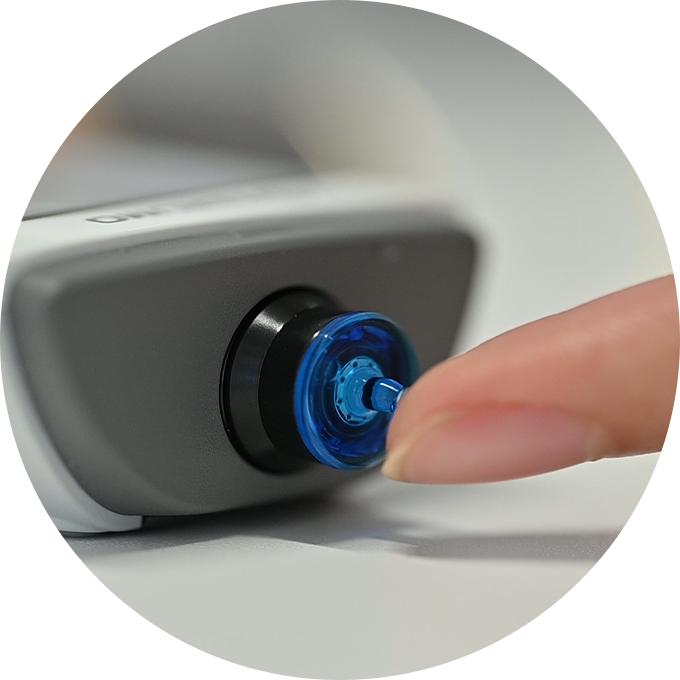Our Careself-monitoring of blood glucose
What kind of blood glucose measurement can help provide a sense of security and peace of mind to patients in their daily lives?
The engineers sought to develop a technology
that would solve three issues.
Blood glucose management is the basis of diabetes treatment.
Developing SMBG that leads to patients’ peace of mind.
Insulin therapy is essential for the treatment of diabetes. It is based on the accurate measurement of blood glucose level. Without accurate measurements, proper blood glucose control is not possible. Hypoglycemia can be life-threatening which is why blood glucose measurement needs to be accurate first and foremost.
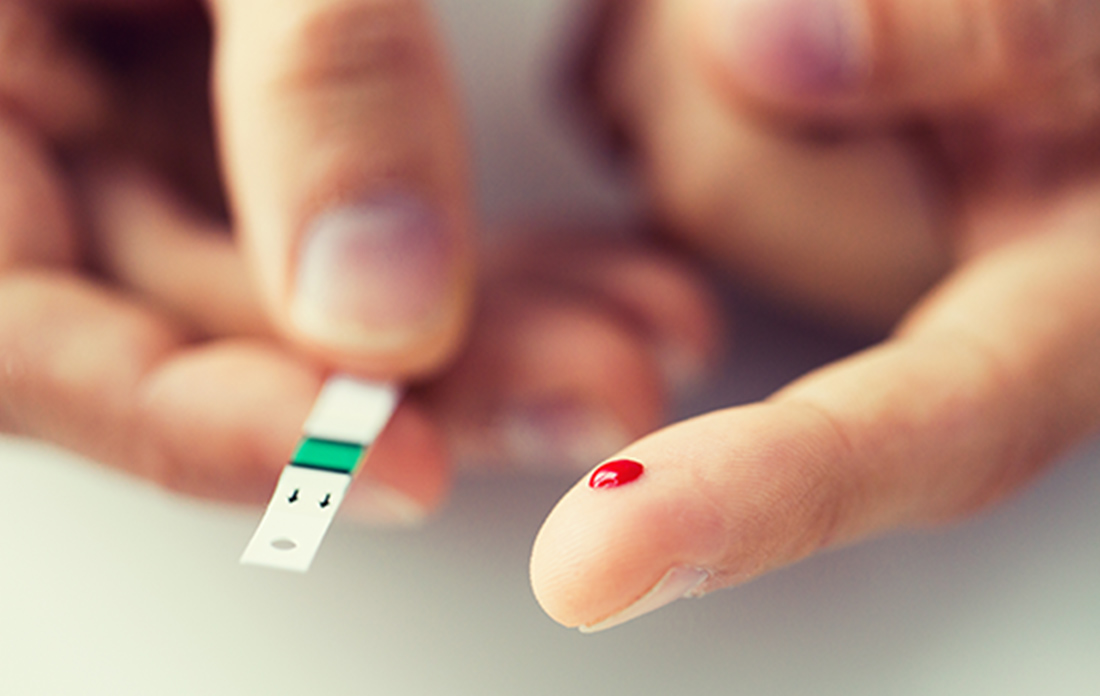
Mr. Takayuki Sugiyama, who is currently the development leader of the ’next-generation blood glucose measurement device’ has been involved in the development of glucose measurement devices for almost ten years. At the beginning, he only had a limited knowledge of diabetes as being a ‘lifestyle-related disease’ and didn’t even realize that there are two types of diabetes, Type 1 and Type 2. Diabetes was a distant world to him at that time.
However, in the course of product development, he had the opportunity to attend related conferences internationally where he was able to hear the real voices of doctors and diabetes patients. He experienced firsthand the worries, pains, and hopes of patients.
Sugiyama's perception of diabetes and diabetes patients changed dramatically from that point.
Sugiyama: “I learned that diabetes is a very difficult disease that requires the patient to make repeated efforts to control it every day. One parent of a pediatric patient who had been using a glucose measurement device since infancy said that the biggest fear was low blood sugar. Blood glucose monitoring is the starting point for diabetes patients to take their next action, such as eating a candy or a meal. However, some patients were using two different blood glucose measurement devices because the results didn’t match their perception, or they were not happy with the accuracy. While talking with KOL doctors at conferences in Europe and the U.S., I learned that the reliability of the readings was of the utmost importance, which encouraged me to believe that there must be something I can do as a Terumo engineer.”
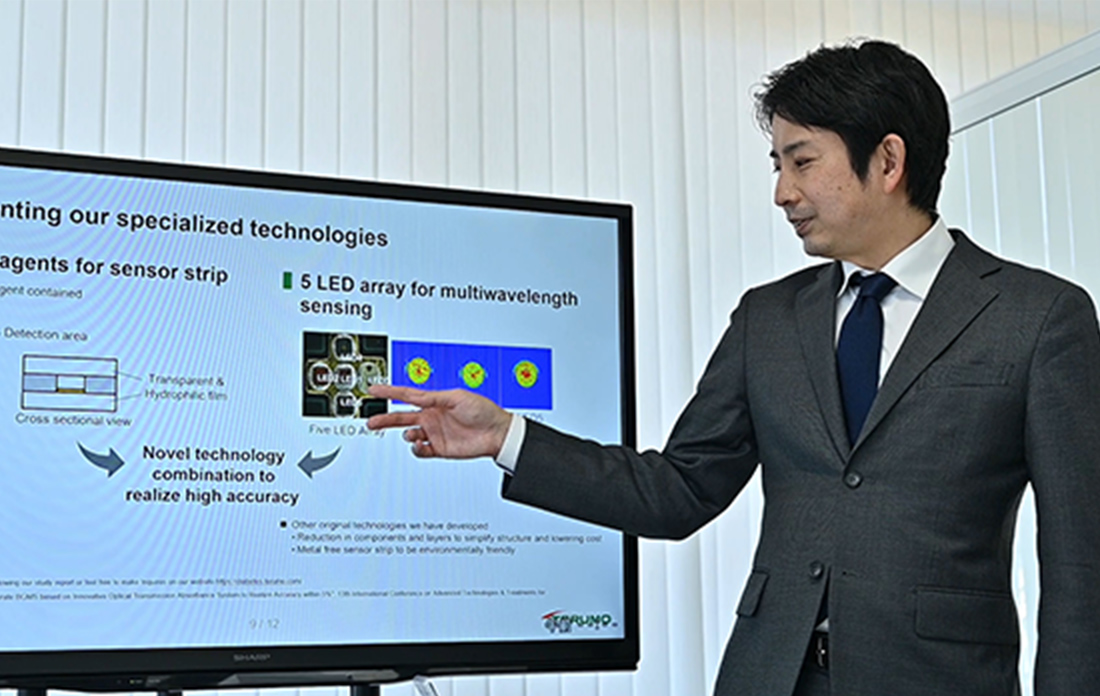
In the U.S., simulation results have been published which showed that the higher the accuracy of SMBG measurement, the more effective the treatment and the lower the frequency of hypoglycemia will be. Meanwhile, the international standard (ISO 15197) set up in 2003 for the error in the accuracy of SMBG measurement to be within ±20% (for large analyzers used in hospitals) was tightened to ±15% in 2013.
Sugiyama and his team of blood glucose measurement device engineers believed it was necessary to develop a technology that would solve three issues which would allow patients to effectively use glucose measurement on a daily basis. The first was to achieve a high accuracy rate of blood glucose measurement to provide peace of mind for those living with diabetes; the second was to improve the heat resistance of such a device to reduce the need for extra care during transport and storage; and the third was to pursue a design that fits everyday lives of the diabetes patients.
-
- High accuracy of blood glucose measurement
-
- Improved treatment effects
- Reduction of risk due to measurement failures

-
- Heat resistance
-
- No need for temperature control during storage
- Lower delivery costs with standard shipping

-
- Design that blends with everyday life
-
- Compact and lightweight
- Sophisticated design that doesn't resemble a medical device

Aiming for high accuracy in blood glucose measurement --
Multi-wavelength sensing technology.
One of the technologies developed by Sugiyama and his team to improve the accuracy of blood glucose measurement is ‘Multi-wavelength sensing.’
Terumo has always possessed strength in technology that uses light to measure blood glucose levels.
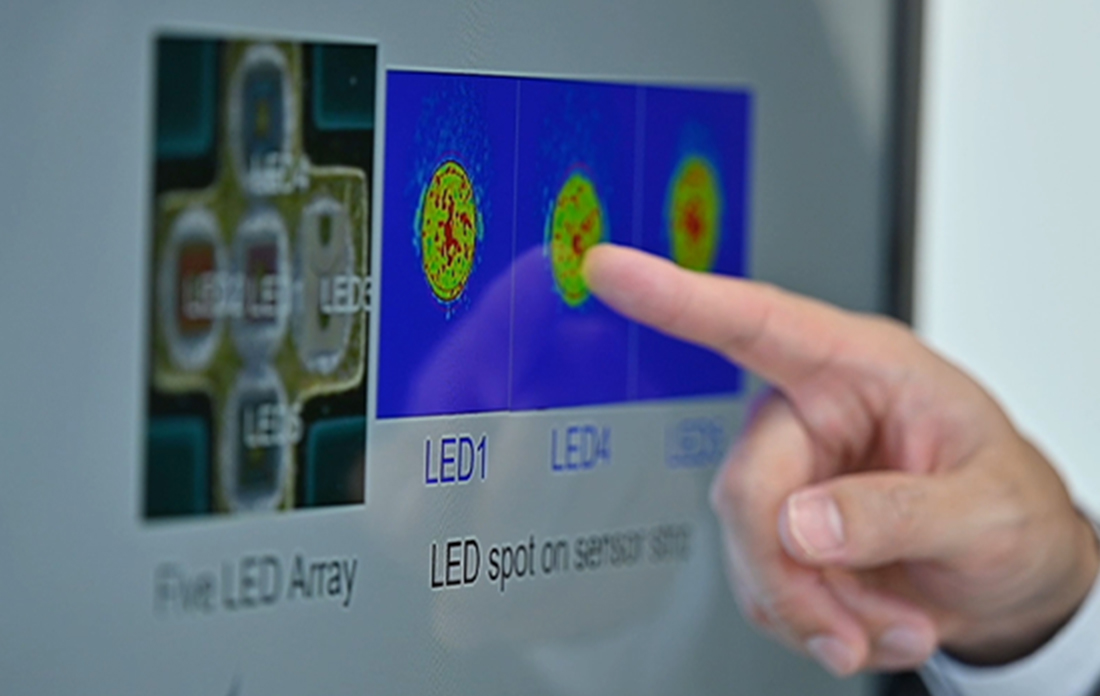
Glucose monitoring measures the amount of glucose in the blood. But the red blood cells, which are abundant in the blood, interfere with the accurate measurement of glucose. To solve this issue, Sugiyama and his team developed a technique that measures glucose using five types of light. Four wavelengths are used to obtain information on the red blood cells which cause noise, and the remaining wavelength is used to capture the color of the reagent which changes according to the amount of glucose. By accurately measuring the amount of red blood cells and eliminating noise, the accuracy of blood glucose measurement is enhanced.
Sugiyama: “In order to develop a technology to detect glucose with high sensitivity, we worked on the development of compounds that produce color well even at low glucose levels. And we are also studying the wavelength of the light to be measured and developing algorithms to calculate the amount of glucose.”
Heat-resistance technology to reduce the burden on transport and storage.
The second concept, ‘heat resistance,’ is essential for maintaining the accuracy of blood glucose measurement. It will also lead to the reduction of stress caused by the effort and care spent on storage.
Sugiyama: “When we conducted individual evaluation of glucose measurement devices distributed in the U.S., nearly half showed errors of ±15% or more. This was probably due to the fact that they were kept in environments that exceeded the specified storage temperature range of 1℃ to 30℃. Considering the actual usage scenarios, for example, the product may be placed in a car in the middle of summer or outdoors. Therefore, it was also necessary to develop a technology to achieve heat resistance that maintains accuracy even in such environments.”
In collaboration with a university, Sugiyama and his team studied enzymes that are highly stable even at high temperatures. In addition, they identified various conditions that affect heat resistance, such as the material, shape, and sealing of the container in which the chips are stored, and succeeded in developing a technology that realizes effective heat resistance.
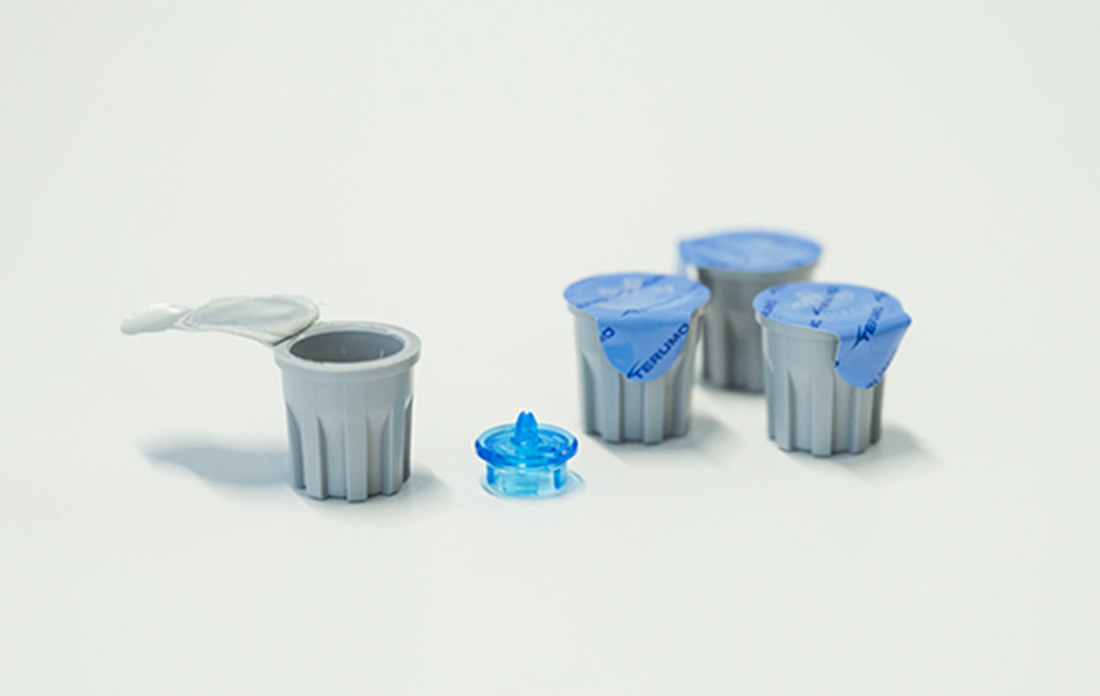
Design that blends with everyday life and doesn’t resemble a medical device.
Until now, Terumo's measuring instruments were mainly designed for the elderly in terms of a size that is comfortable to hold and a display that is easy to read. But as there are also many young people with Type 1 diabetes, Sugiyama and his team are hoping to create a design that would appeal to them and be casually carried around.
Sugiyama: “From surveys, we’ve learned that patients are concerned about blood glucose measurement when they go out. Although they are supposed to measure their blood glucose four times a day, it seems that some are reluctant to do so because they are worried about being noticed taking measurements in public places. Nowadays, we are surrounded by many excellently designs of devices such as smartphones. With the aim of creating a blood glucose measurement device that diabetes patients throughout the world can use with confidence and easily carry around, we are collaborating with a Scandinavian company to pursue a sophisticated design that is unprecedented from a global perspective.”
And along with the design, it is also necessary to consider size and weight reductions for portability which is an extremely tough technical challenge. In order to achieve both performance and compactness as a medical device, electronic components have to be packed into a small volume. Sugiyama and his team are also working on developing technologies for size and weight reductions.
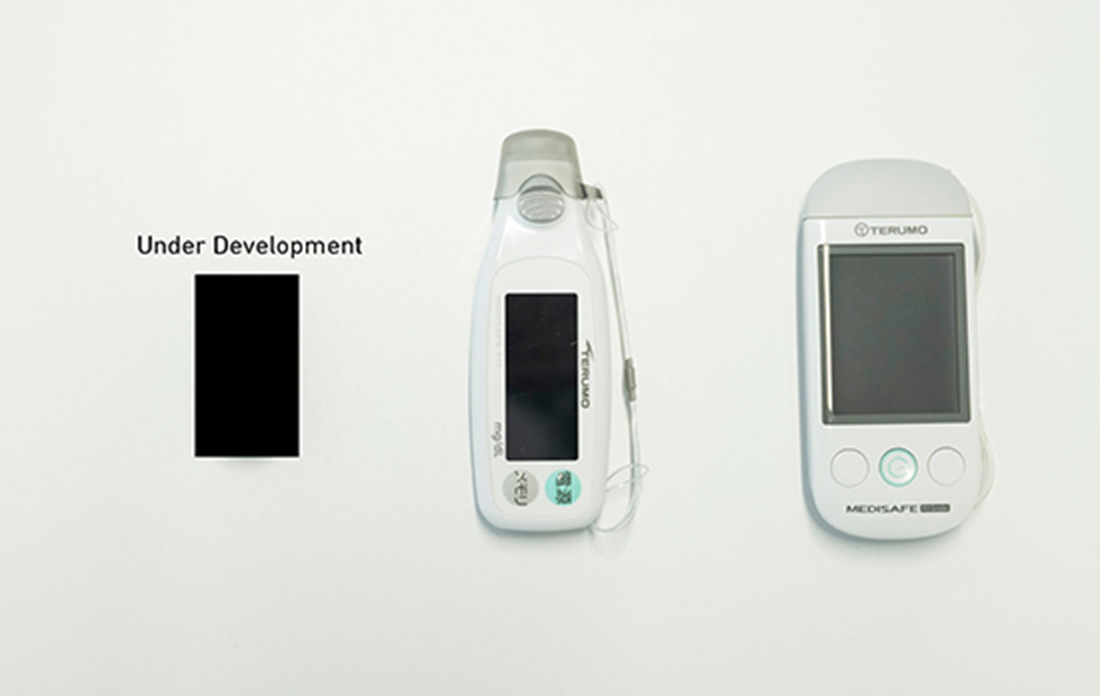
To stand alongside diabetes patients around the world in their daily lives with our technology and quality.
What motivated Sugiyama and his development team was the desire to provide a blood glucose measurement device that diabetes patients and their parents can use with confidence.
Sugiyama: “‘I measured my blood glucose with a Terumo blood glucose measurement device, so I feel safe as I can trust its readings.’ — Nothing could make us happier as engineers if our product could make people feel that way. And I hope we can bring these types of technologies together to further develop products that can be used by as many patients as possible.”
Terumo possesses the principal technology of measuring with light. This strength of Terumo can be used not only for more accurate blood glucose measurement, but also for a variety of other measurements.
Sugiyama: “For example, it could be developed into a more accurate POCT (Point-of-Care Testing) device, or it could be used to measure targets other than glucose, such as HbA1c. Our development team hopes to further contribute to diabetes treatment around the world. We also look forward to hearing from any companies who are interested in our technologies and receiving ideas on how it could be utilized for other applications.”
Profile
-
Takayuki SugiyamaDevelopment & Technology Section (Life Care Solution)
Kofu East Factory
Medical Care Solutions CompanyDevelopment leader for the ‘next-generation blood glucose measurement.’ He has been a member of the development team from the product planning stage and also in charge of the final development process of clinical research and regulatory submission. He has been consistently involved in the development of blood glucose measurement devices from start to finish.

